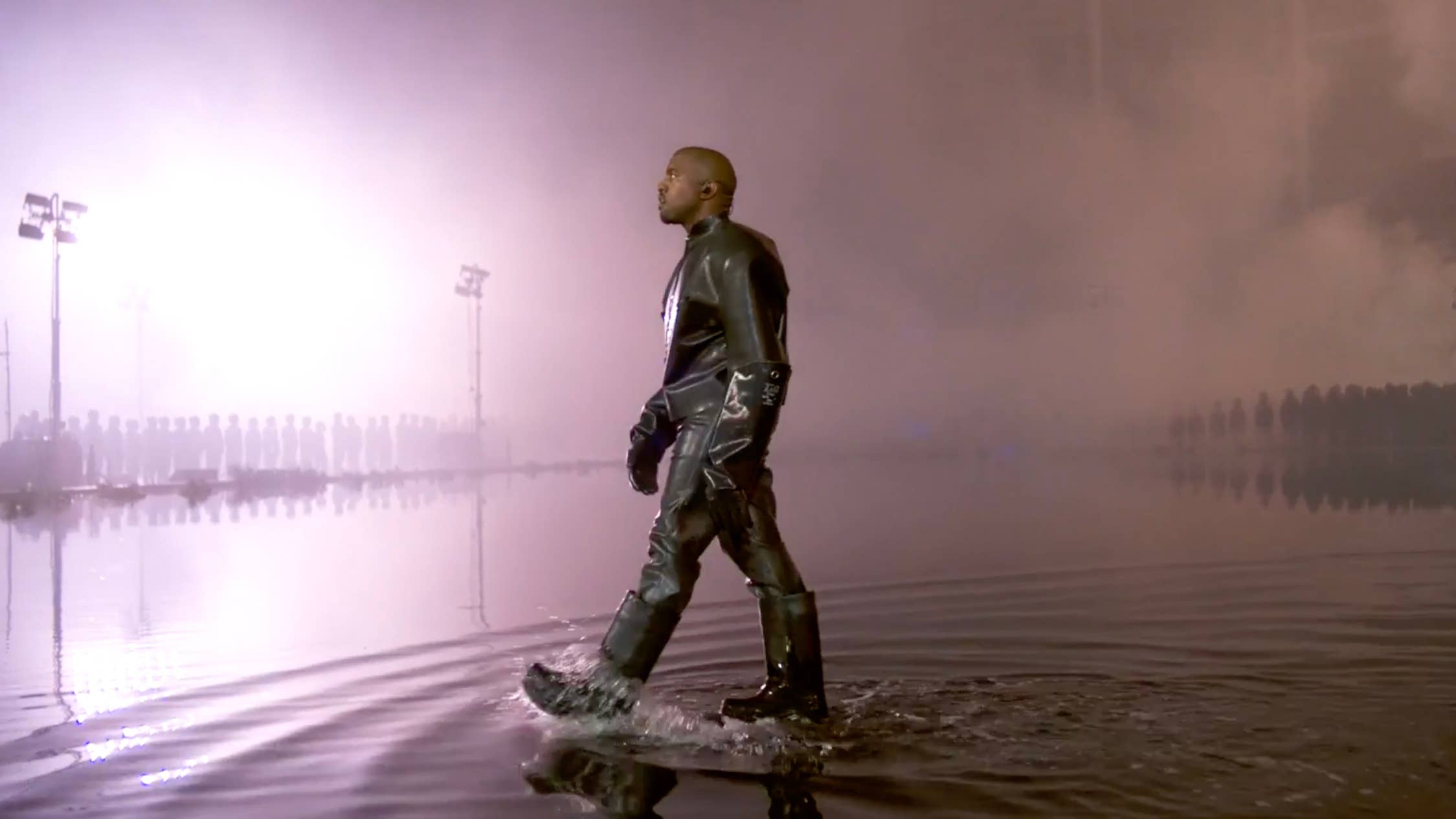
In 2016, Kanye West tweeted that his album The Life of Pablo was a “living breathing changing creative expression.”
Famously, he kept tinkering with the album even after dropping it, uploading new versions to streaming platforms for weeks after its initial release. At the time, it was an unprecedented way of releasing music, described by critics as both “an exciting prospect for art” and “the death of the traditional album.”
Six years later, Kanye is taking this philosophy to the next level. In the past, he had to work within the restrictions of streaming services and record labels, but he’s leaving those limitations behind by releasing his new album Donda 2 exclusively on his own device: the Stem Player.
This is the first time we’ve seen an artist as popular as Kanye self-release an album using their own technology and distribution channels. So far, he’s using his self-contained delivery method to rethink the idea of album rollouts. The release of Donda 2 is already unlike anything that’s ever come before it, and the final version of the album isn’t even out yet.
On Wednesday, Feb. 23, Kanye uploaded the first version of Donda 2 to the Stem player. Instead of the full album, though, he only shared four songs, signaling that the album would arrive in pieces as he finished it. Some of the songs sounded incomplete, hinting that new versions would be added as they were finalized—a theory that was seemingly confirmed by the co-inventor of the Stem Player, Alex Klein, who tweeted that the device would be “always updated” with “the latest versions.”
Kanye’s fascination with Steve Jobs and Silicon Valley is well-documented, and now he’s treating his own music like a piece of software for the Stem Player.
One day later, another update went live on the Stem Player, bringing the total number of Donda 2 songs to 16. This update was called “V2.22.22 MIAMI,” and it contained high-quality versions of every new song that was played at the Miami listening party on Feb. 22. Once again, the songs didn’t appear to be finished, full of half-mumbled reference verses and incomplete tracks. At this point, it became clear that Kanye plans to use the Stem Player as a way to share constantly-updating versions of the album until it’s finished. Using his own technology, his “living breathing changing creative expression” ambitions are coming to life.
Kanye’s fascination with Steve Jobs and Silicon Valley is well-documented, and now he’s treating his own music like a piece of software for the Stem Player. Think of the Miami listening party stems as a beta version of Donda 2, and expect him to keep releasing patches and updates until he’s satisfied with the end product.
Over the past few years, Kanye has become increasingly interested in opening his creative process up to fans. It started at his listening parties, where he would play half-finished songs in front of stadium crowds, then repeatedly make changes before settling on final versions. He even polled the users of a Kanye fan Discord server about which version of “Hurricane” they wanted on the final edition of Donda.
Some of Kanye’s decisions make more sense in the context of leak culture, where fans unearth unfinished versions of songs and develop (often unfair) expectations for albums before they even arrive. Kanye is leaning into this by openly sharing his in-progress songs as he makes them. Throughout the Donda rollout, fans ripped audio from each of the listening party streams, and started putting together custom albums with their favorite versions of each track. Understanding this dynamic, Kanye put multiple versions of some songs on the final tracklist.
With the Stem Player, he’s able to take this idea even further. Instead of waiting for people to rip the audio from the Miami listening event, he put full-quality versions of those work-in-progress songs straight on the device—something he wouldn’t have been able to do so easily on a platform like Apple Music or Spotify.
To use another tech metaphor, Kanye is starting to treat his music like open-source code. The Stem Player is designed to handle multiple versions of each song, and it lends itself well to customization. The very purpose of the device is to encourage interactivity, letting users isolate specific elements of each song and remix them. This goes hand in hand with Kanye’s goal to flatten the music creation and consumption process.
“We live in an age now where people really gravitate to informed communities around their favorite artist, and that close-knit community should have the opportunity to transact directly with that artist,” Stem Player co-inventor Alex Klein recently told GQ. “So that’s what the Stem Player offers the opportunity to artists and to listeners to do, which is to transact on a purchase basis, not only for the hardware, but also for the content itself with the artist. And it’s about making a fair deal, and not a one size fits all deal, with the audience, and having the artists lead that conversation and set the value on the work that they put out in the way that they think is appropriate.”
When Kanye first announced that Donda 2 would be exclusively released on the Stem Player, it was viewed by most people as a way to shirk the major streaming platforms and take control of his own work. In a way, that’s true—Kanye was unhappy with the fact that “artists get just 12% of the money the industry makes,” so he declared, “It’s time to free music from this oppressive system. It’s time to take control and build our own.” He immediately accomplished these goals, pulling in over $2 million in Stem Player sales in the first 24 hours (for the same amount of revenue from DSPs, he said he would have needed to accumulate over 500 million streams). Now that he’s actually releasing the music, though, it’s clear that the Stem Player rollout is about more than just ownership and financial gains for Kanye. It’s also allowing him to release music in the ways that he’s always wanted to.
As with most innovations, the results have been uneven so far. The majority of the world still doesn’t own Stem Players, so a lot of piracy is happening, and there are a lot less people listening to Donda 2 right now than there would have been if it was available on Spotify. The delivery method has also caused confusion among fans, who can’t tell whether the music is finished or not (or how to listen to it). The growing pains are inevitable, though, and the world needs figures like Kanye, who open people’s eyes to new possibilities and work out solutions to problems in front of the world.
As people adapt to a new way of consuming music (and Kanye figures out the most effective ways to execute) the hope is that he will spark an idea in the head of a kid who will build on it in the future. Of course, Kanye is in a unique position to pull something like this off right now—he has enough income from clothing sales that he doesn’t need to rely on music revenue—but if he successfully shifts the music industry’s old models, it could pave the way for smaller artists to forgo streaming services, too. It’s no secret that artists are upset with the music industry’s current revenue and ownership models, but they currently don’t have many other options. It’s still very early, but maybe this is the start of a new path.
As Klein explained to GQ, “We are ready for a radical break with the existing paradigm, but one that brings more people in and speaks to the human spirit that we’ve forgotten.”

